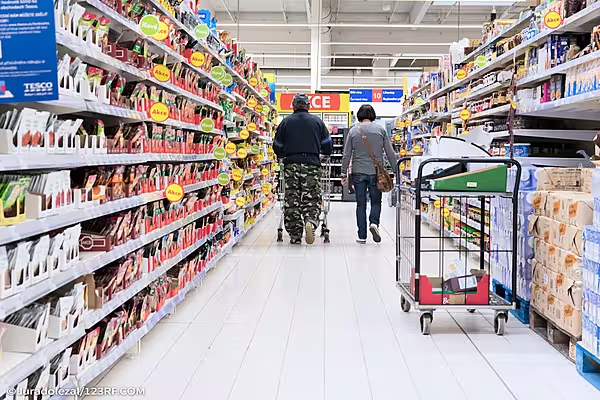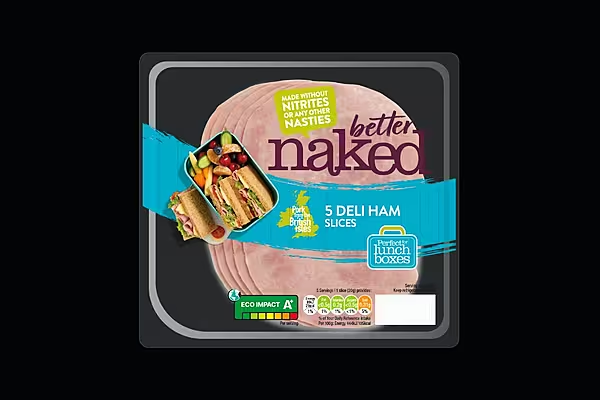The fragile state of the British consumer will be laid bare this week when Tesco, the country's biggest retailer, updates on trading amid a worsening cost of living crisis.
When Tesco, which has more than a 27% share of Britain's grocery market, reported annual results in April, CEO Ken Murphy said it was too early to make the big calls on changing shopper behaviour as a result of the crisis.
He said it was difficult to untangle the impact of cost pressures coming through for Britons, particularly a first hike in energy bills, from the unwinding of pandemic restrictions, with more people going back to the office.
On Friday, when Tesco reports on first-quarter trading, Murphy is likely to have a clearer view.
Adjusted Operating Profit
With the consumer mood having undoubtedly darkened, and Tesco shares down 15% so far this year, the key question is whether the group will maintain its guidance for the year to end-February 2023 - retail adjusted operating profit of £2.4-2.6 billion ($2.9-$3.2 billion), down from £2.65 billion in 2021-22.
"At this stage in time the risk to forecasts, we sense, is moderate, but skewed more to the downside than the upside," said Clive Black, analyst, Shore Capital .
Pessimism weighing on Britain's households has hit unprecedented levels, as wages struggle to keep pace with inflation that reached 9% in April and is heading for double digits.
Last week, the average cost of filling up a typical family car with fuel exceeded 100 pounds for the first time, while official survey data showed that 77% of UK adults were worried about the rising costs of living. Poundland owner Pepco said Britons were even reining in spending on essential items.
Trading Down
There is evidence that Britons are trading down in both stores and products, switching from mainstream supermarkets to discounters and from branded to lower priced private label products.
To cushion the blow, the government last month announced a £15 billion support package for households struggling to meet soaring energy bills, that are set to rise again in October.
Many households are also facing higher mortgage costs, with the Bank of England set to raise interest rates on Thursday for the fifth time since December.
Tesco is expected to report a fall in underlying UK sales in its first quarter to 28 May compared with the same period last year when they were boosted by a third pandemic lockdown.
Like-For-Like Sales
Analysts are forecasting UK like-for-like sales, excluding VAT sales tax and fuel, to fall by up to 1.8%. They fell 1.2% in the previous quarter.
But analysts still consider Tesco as best placed amongst the major UK supermarket groups to navigate the downturn.
Monthly industry data has shown the retailer performing ahead of rivals Sainsbury's, Asda and Morrisons and winning market share on a sales value basis.
Tesco is investing some of its margin to keep prices competitive.
It is also benefiting from the popularity of its 'Clubcard Prices' loyalty scheme and the unrivalled scale of its store network and online operation.
Read More: Tesco Profit Jumps 36% But Fall Expected In Current Year
News by Reuters, edited by Donna Ahern, Checkout. For more Retail stories, click here. Click subscribe to sign up for the Checkout print edition.







